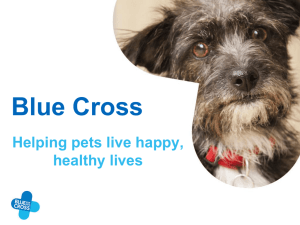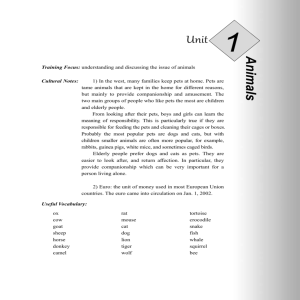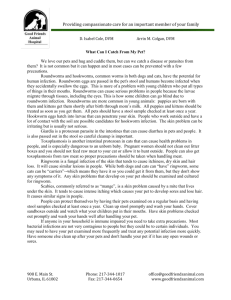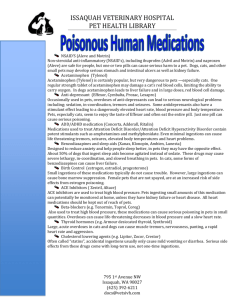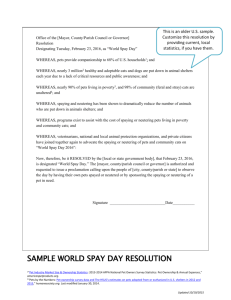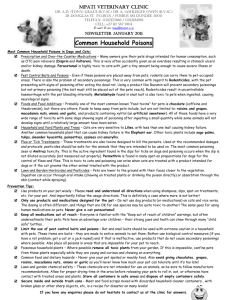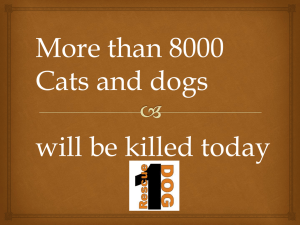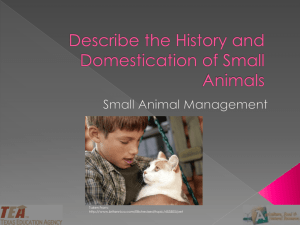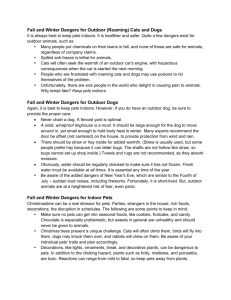The Variables, The Opportunities, The Resources, The Design Tips
advertisement
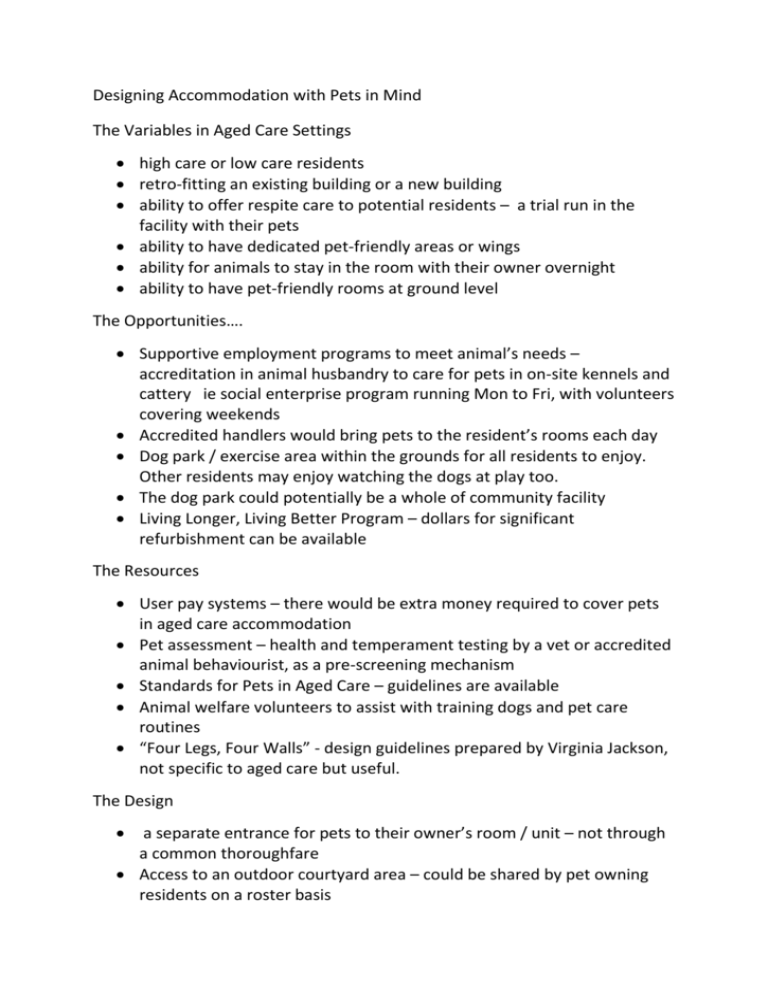
Designing Accommodation with Pets in Mind The Variables in Aged Care Settings high care or low care residents retro-fitting an existing building or a new building ability to offer respite care to potential residents – a trial run in the facility with their pets ability to have dedicated pet-friendly areas or wings ability for animals to stay in the room with their owner overnight ability to have pet-friendly rooms at ground level The Opportunities…. Supportive employment programs to meet animal’s needs – accreditation in animal husbandry to care for pets in on-site kennels and cattery ie social enterprise program running Mon to Fri, with volunteers covering weekends Accredited handlers would bring pets to the resident’s rooms each day Dog park / exercise area within the grounds for all residents to enjoy. Other residents may enjoy watching the dogs at play too. The dog park could potentially be a whole of community facility Living Longer, Living Better Program – dollars for significant refurbishment can be available The Resources User pay systems – there would be extra money required to cover pets in aged care accommodation Pet assessment – health and temperament testing by a vet or accredited animal behaviourist, as a pre-screening mechanism Standards for Pets in Aged Care – guidelines are available Animal welfare volunteers to assist with training dogs and pet care routines “Four Legs, Four Walls” - design guidelines prepared by Virginia Jackson, not specific to aged care but useful. The Design a separate entrance for pets to their owner’s room / unit – not through a common thoroughfare Access to an outdoor courtyard area – could be shared by pet owning residents on a roster basis Crates – pets may tolerate being in a pet crate for short periods – ie while the resident is receiving care or treatment For cats – levels of space (tiers) are important, wide window sills and ledges at different levels. Cats need different levels, not lots of space Cats and dogs need warm spots to lie in – full length windows to allow sun light in are ideal Durable surfaces, easily cleaned and ones which don’t retain odour Double gates or a holding area is ideal – ie a baby gate or pet gate to stop a dog running off into a main corridor or thoroughfare Scratching posts for cats Dogs need to be toilet trained, litter trays for cats Ensure safety for cats on balconies in multi-level buildings – cat netting (compulsory cat confinement is inevitable in wider society in time, so we may as well plan for it) Internal courtyards – pets can be released for exercise, one by one on rotation during the day An expert in the field of designing pet-friendly accommodation is Virginia Jackson Harlock Jackson virginia@harlockjackson.com.au web. www.harlockjackson.com.au Harlock Jackson are leaders in animal management policy and research. Primarily, this relates to the integration of dogs and cats as pets into the urban environment. Their work on pet friendly housing design and the integration of dogs into public open space are world firsts and have been widely published.

